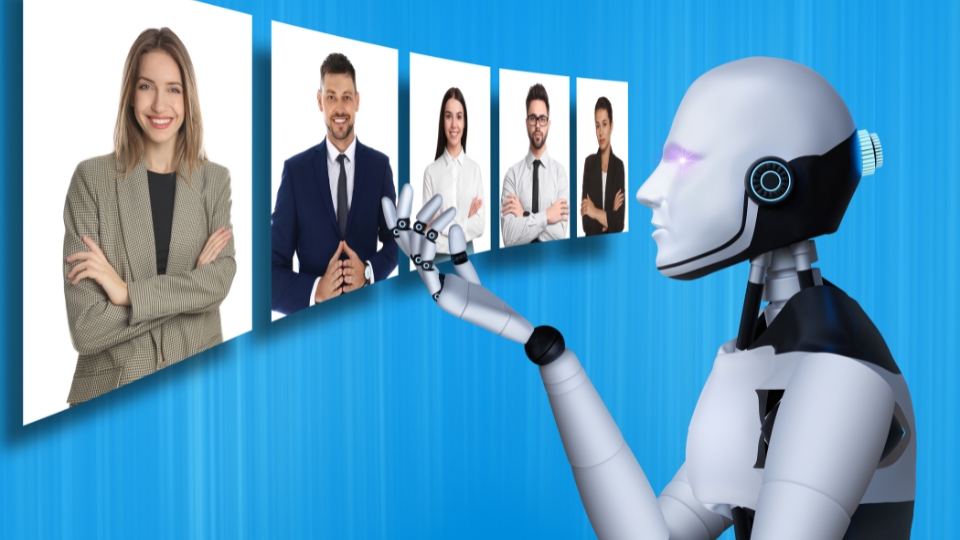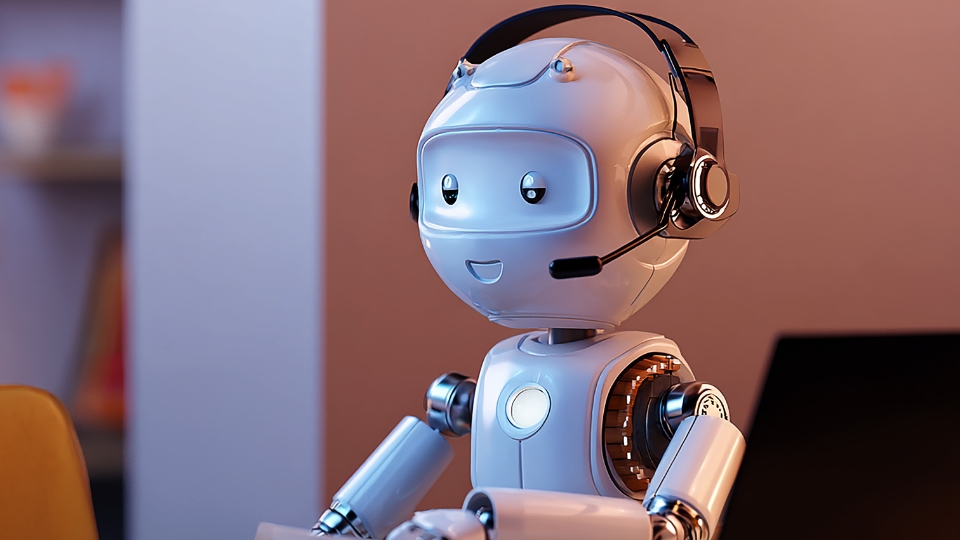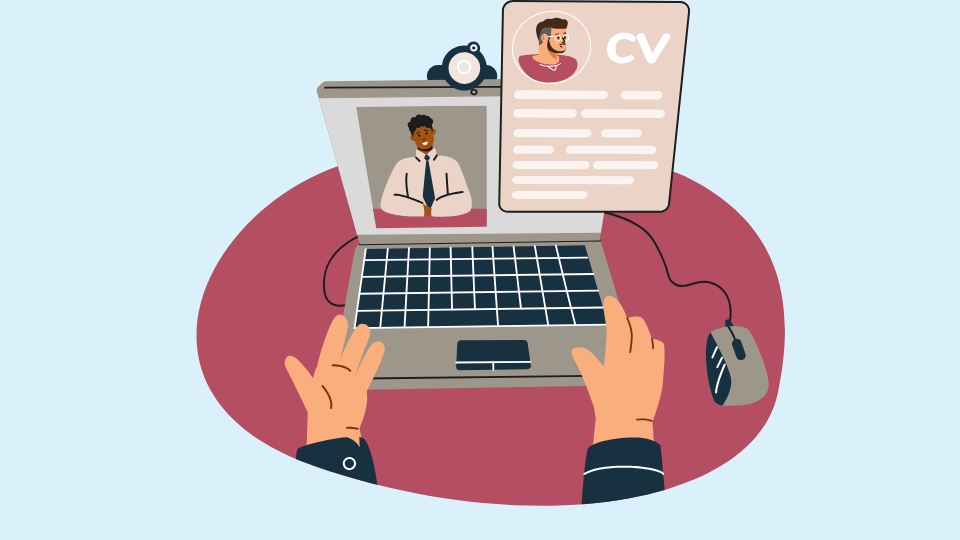The Future of Recruitment: How AI and Automation Are Changing the Hiring Process

Recruitment is not an exception to how technology is changing industries in today’s fast-paced, digital world. Artificial intelligence (AI) and automation are revolutionizing how businesses attract, assess, and hire talent. With its reliance on administrative duties, interviews, and manual screening, the traditional hiring process is changing. In addition to simplifying processes, automation and artificial intelligence are enhancing candidate experience, accuracy, and efficiency.
As we look ahead, understanding how AI and automation are transforming the recruitment landscape will help both employers and job seekers adapt to these changes. In this blog, we’ll look at how these technologies are transforming hiring, their advantages, and how businesses can use automation and artificial intelligence to improve their hiring processes.
1. AI in Recruitment: An Overview
In recent years, artificial intelligence has advanced significantly, and one industry that has profited from these developments is recruitment. Algorithms and machine learning are used in AI recruitment to automate time-consuming tasks that human recruiters previously performed. This covers everything, including finding applicants, reviewing resumes, evaluating applications, and even holding preliminary interviews.
Instead of replacing recruiters, AI serves as their assistant, handling tedious tasks so recruiters can focus on the more strategic and human aspects of hiring. Throughout the hiring process, it helps companies save time, lessen bias, and ensure data supports their decisions.
2. Resume Screening and Shortlisting with AI
The automation of the resume screening and shortlisting process is one of the most critical ways AI is changing the hiring process. For a single position, recruiters typically go through hundreds or even thousands of resumes. In addition to taking a long time, this procedure is prone to bias or human error. However, resumes can be swiftly analyzed by AI-powered tools that look for pertinent keywords, experience, skills, and qualifications.
How it works:
AI resume screeners read and analyze resumes using natural language processing (NLP). By learning from past hiring trends, these tools can rank resumes based on specific job requirements. Businesses can improve candidate selection, shorten time-to-hire, and increase the likelihood of finding the best candidate for the position by automating this step of the process.
The benefit for employers:
The primary advantage of AI in resume screening is efficiency. It allows recruiters to handle more candidates without compromising on quality. AI-powered tools can also identify potential biases, such as gender or ethnicity, in the hiring process, ensuring a more diverse and inclusive workforce.
For job seekers:
AI can provide a faster response to applicants. With fewer manual steps in the process, candidates may receive feedback or updates more promptly. Additionally, it allows job seekers to tailor their resumes to meet specific job requirements by using AI-driven recommendations.

3. Chatbots and Virtual Assistants for Candidate Interaction
Another way AI is transforming recruitment is through chatbots and virtual assistants. These tools can engage candidates in real time, providing instant responses to inquiries, collecting additional information, and even assisting with scheduling interviews.
How it works:
AI chatbots are powered by machine learning and NLP. They can simulate human conversation, answer frequently asked questions, collect essential candidate details, and guide them through the application process. Chatbots can also send reminders for upcoming interviews and gather feedback after each interview.
The benefit for employers:
By using chatbots, recruiters can offer candidates a seamless, 24/7 experience. This improves candidate engagement, reduces HR team workload, and ensures candidates are kept informed at every stage of the hiring process.
For job seekers:
Candidates benefit from the convenience of interacting with the company at any time, without waiting for a human recruiter to respond. Chatbots can also provide immediate answers to common questions, such as the status of an application or next steps in the process.

4. Predictive Analytics for Talent Matching
One of the most exciting applications of AI in recruitment is predictive analytics. By analyzing historical data, AI algorithms can predict which candidates are likely to succeed in a particular role based on various factors such as skills, experience, and cultural fit. This goes beyond traditional qualifications and considers the broader picture of how well a candidate will perform in the company’s environment.
How it works:
Predictive analytics tools use data from previous hires to identify patterns in employee success. By analyzing past performance data, career progression, and even employee engagement levels, these tools can predict which candidates are more likely to succeed in the role and within the company culture.
The benefit for employers:
Predictive analytics helps reduce turnover and improve employee retention. By hiring candidates who are more likely to stay long-term and perform well, companies can build stronger, more cohesive teams. This also ensures a better alignment between the company’s needs and the candidate’s abilities.
For job seekers:
AI-driven predictive analytics could mean a better match between the job and the candidate. It ensures that the role aligns with the candidate’s skills, interests, and future career aspirations, increasing the likelihood of job satisfaction.

5. AI-Powered Video Interviews
While face-to-face interviews will always have a place in recruitment, AI-powered video interviews are becoming increasingly popular. These virtual interviews use AI to analyze candidates’ verbal and nonverbal cues, such as facial expressions, tone of voice, and body language. This helps recruiters assess not just what candidates say but how they say it.
How it works:
AI-powered video interviews involve candidates answering prerecorded questions via a video platform. AI analyzes their responses using facial recognition and voice analytics to assess their confidence, enthusiasm, and even emotional intelligence. These insights are then provided to recruiters, who can use them to make more informed decisions.
The benefit for employers:
AI-powered video interviews allow companies to streamline the interview process, especially when dealing with large volumes of candidates. It reduces the need for initial in-person interviews and helps recruiters quickly identify promising candidates based on both verbal and nonverbal communication.
For job seekers:
Candidates benefit from the flexibility of video interviews, which can often be completed at their convenience. AI-powered assessments can provide a more objective view of a candidate’s skills and personality, reducing the risk of unconscious bias during the interview process.

6. Enhanced Candidate Experience
In a competitive job market, providing an exceptional candidate experience is more important than ever. AI and automation can help companies deliver a more engaging and seamless experience for candidates at every touchpoint, from the initial application to the final job offer.
How it works:
Automation tools can streamline the entire recruitment process, sending personalized messages, providing real-time updates, and guiding candidates through each stage. AI can also be used to personalize job recommendations based on candidates’ preferences and experience, ensuring they are matched with roles that best suit their skills and career goals.
The benefit for employers:
A smooth, engaging candidate experience helps build a positive employer brand. It attracts top talent. Candidates are more likely to engage with a company that communicates effectively and transparently throughout the hiring process.
For job seekers:
Candidates benefit from faster responses, better communication, and a more organized application process. AI tools can also ensure that the process is tailored to their specific needs, creating a more personalized experience.

7. Reducing Bias and Improving Diversity in Hiring
AI and automation are helping to address one of the biggest challenges in recruitment: bias. Traditionally, unconscious bias has played a significant role in hiring decisions, resulting in less workplace diversity. AI has the potential to eliminate many of these biases by focusing solely on objective criteria —such as skills, experience, and qualifications —rather than subjective factors like age, gender, or ethnicity.
How it works:
AI-driven tools can help remove bias from job descriptions, ensuring they are inclusive and appealing to a broader range of candidates. Additionally, AI can focus on analyzing data and performance metrics, reducing the risk of human biases influencing decisions.
The benefit for employers:
A more diverse workforce leads to improved creativity, innovation, and better decision-making. By using AI to reduce bias in recruitment, companies can foster a more inclusive culture and improve employee satisfaction and retention.
For job seekers:
AI helps ensure that job seekers are evaluated based on their skills and qualifications, rather than on unconscious biases. This creates a more level playing field and allows candidates from diverse backgrounds to secure opportunities that may have been overlooked in traditional hiring processes.

8. The Role of Human Recruiters in the AI-Driven Process
While AI and automation are transforming recruitment, they will never fully replace human recruiters. Instead, the role of recruiters will shift. Instead of spending hours on administrative tasks or sorting through resumes, recruiters will focus on high-level strategy, relationship-building, and candidate experience. AI will help them become more efficient, but human judgment will remain crucial.
Why it’s important:
Human recruiters bring emotional intelligence, empathy, and a deep understanding of company culture—elements that AI simply can’t replicate. The future of recruitment will involve a blend of technology and human insight, where recruiters use AI as a tool to make more informed decisions while still maintaining the personal touch that candidates expect.

9. Challenges and Considerations
Despite the many benefits, AI and automation in recruitment are not without their challenges. One of the biggest concerns is the potential for over-reliance on technology, which could lead to overlooking valuable candidates whom AI algorithms may not have adequately assessed. Additionally, there are data privacy concerns and the need to ensure that AI systems are ethical and transparent.
How to address it:
Companies should ensure that AI tools are used as an augmentation, not a replacement, for human judgment. They should also be transparent about how AI is used in their hiring processes and ensure they comply with data protection laws.

10. The Future of Recruitment: A Human-AI Partnership
Looking ahead to 2026 and beyond, the recruitment process will be defined by a partnership between AI and human recruiters. AI will handle repetitive, data-driven tasks, allowing recruiters to focus on building relationships, fostering diversity, and ensuring a positive candidate experience. The future of recruitment will be more efficient, objective, and personalized, thanks to the rise of AI and automation.
Conclusion
AI and automation are undeniably changing the recruitment landscape, making it faster, more efficient, and less biased. While these technologies offer immense benefits, the human element of recruitment will continue to play an essential role. By embracing AI and automation, companies can streamline their hiring processes, improve the candidate experience, and build a more diverse and inclusive workforce. For job seekers, staying informed about these trends will help them remain competitive in an increasingly digital, AI-driven job market.
Our blog
Lastest blog posts
Tool and strategies modern teams need to help their companies grow.Recruiting in a Competitive Market: How to Stand Out from the Crowd
In today’s job market, the competition for top talent is fiercer than ever. With businesses vying for the same pool...
December 11, 2025
By FxCareer
How to Attract Gen Z Talent to Your Organization: A Guide for Employers
As the new generation entering the workforce, Generation Z, also known as individuals born between 1997 and 2012, is transforming...
December 8, 2025
By FxCareer
What Employers Really Want from Cover Letters
In today’s competitive job market, your cover letter is often the first point of contact between you and a potential...
December 4, 2025
By FxCareer

Join 2,000+ subscribers
Stay in the loop with everything you need to know.




